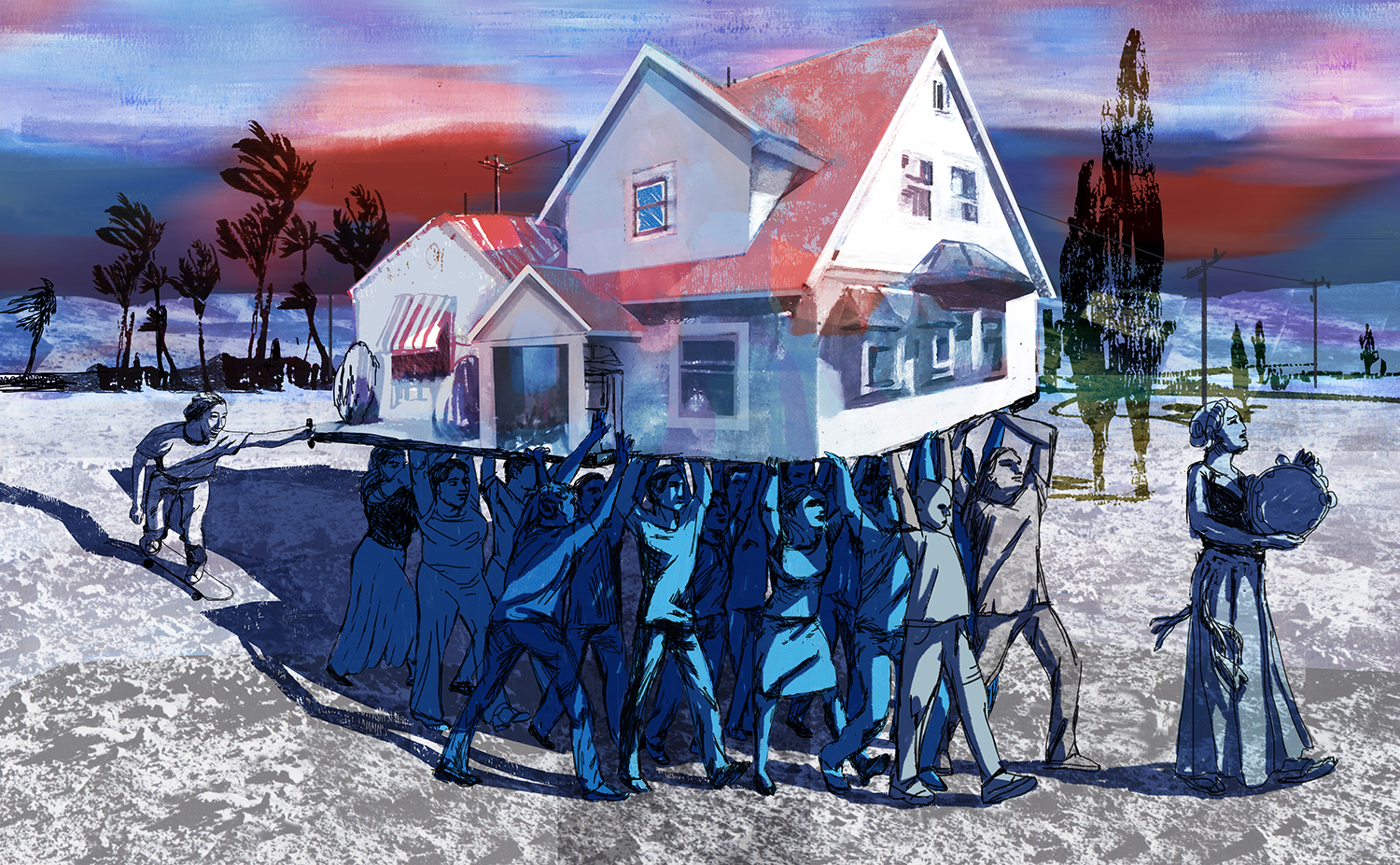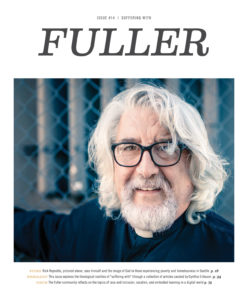
I am a Black, Christian woman. I am a wife, mother, advocate, and psychological assistant. I am a daughter of the Black church and a student of Western psychology. I have often felt I was living in two worlds, and as the product of both, I now have the privilege of translating between those worlds and serving as an advocate and ambassador from within.
I am so grateful to have been educated in spaces that lifted up the importance of intercultural understanding and engagement. However, that discussion of engagement often came from a particular point of view. The conversation seemed to identify the student as Western, White, and dominant, and the ministry recipient as “ethnic,” darker, and minority. Thus, the discussion centered on those who choose to enter into communities of color, coming from without. As a daughter of the Black church, I am compelled to give space to the voices of those who exist and serve alongside and from within.
While some of our work may require entering into spaces and times of suffering, some of us have no separation between where we were raised, where we work, and where we live, so we serve and suffer from within the walls of our own community. And some, like myself, have the honor of equipping and supporting those who are already faithfully laboring in those spaces. This article speaks to those who are embedded—physically, socially, and culturally—in the same context of those they serve.
In the following paragraphs, we will explore some of the steps ministry leaders can take when they serve in churches impacted by repeated exposure to ongoing, systemic, and complex trauma. Specifically, I will discuss how communities can shine the light of truth on the impact of trauma (naming), model health- and help-seeking behavior (proclaiming), and actively work to foster environments that are conducive to support and healing (embracing). Since my dissertation studies and subsequent outreach have focused on churches comprising primarily ethnic minorities, especially urban Black congregations and parachurch organizations, I will frequently reference insights gleaned from these contexts.1
Equipping Trauma Support within the Community
Research shows that exposure to at least one traumatic event is fairly common. And those who are exposed to traumatic events do not always develop symptoms of distress.2 However, with trauma there is a dose-response effect: The more trauma one is exposed to, and the more personally violating the trauma, the more likely one will develop lasting symptoms of traumatic stress. Empirical evidence shows that ethnic minorities in urban areas are disproportionately exposed to community violence and its related stressors.3 It makes sense, then, that in communities where there are layers of trauma—systemic, generational, familial, direct—we see the impact of prolonged and repeated exposure to stress. Individuals are exposed to suffering on multiple levels: in bodies weary from too many interactions with the autonomic physiological stress response, in families seemingly compelled to repeat generational patterns of hurting and being hurt, in minds convinced that the world is unsafe and unpredictable, and in communities inhibited from getting the help they need.
Yet, even in the midst of communities that are disproportionately burdened with trauma and have systemically underutilized health resources, we see obvious flourishing, resilience, power, and beauty. The realities of the suffering of many communities demand a multipronged approach to healing, something which has often been embodied and championed by local Black churches. For generations, Black people have turned to their pastors and local churches in times of need.4 Even now, long before a person comes into my turquoise-tinted office, seeking help from a veritable stranger, they are more likely to first seek help from the men and women who have been loving and leading them for years.
So why should we empower pastors and leaders to address mental health issues instead of teaching them how to triage and refer? Because we must give the tools to the people who are already doing the work. Let me tell you a story.
When I was newly married, I was alone in our apartment when I thought I smelled gas and noticed the stove wasn’t working. I called the gas company and they came right away. The technician was kind and performed a thorough inspection of all the necessary equipment. It became quickly apparent that my pilot light was out. He told me that fixing the pilot light is something he could teach me so I could then do it on my own. If something more complicated occurs, I could call them and they would use their expertise to fix it. I cannot fix a gas leak nor do I need to; but I can now fix a pilot light. So it is with the education of our ministry leaders. They are not therapists and do not need to be (though they are often doing the work of therapists, without the educational preparation or financial compensation!). And not everybody and every problem requires therapy. But we can do a better job of equipping our pastors with the knowledge they need to fix the pilot lights around them and ensure they know psychological professionals are accessible should a more complicated issue arise.
In communities impacted by repeated exposure to trauma and prevented from getting help due to stigma or lack of access, what tools can we share to help in the work of cultivating churches that promote holistic health, including mental health? We can use the preexisting power of our words, our leaders, and our church bodies to model truth-telling (naming), help-seeking (proclaiming), and social support (embracing). In naming, proclaiming, and embracing, local churches can change the conversation around the suffering that lurks, undiscussed, in the corners of our communities.
Naming: Identifying Trauma in Understandable Ways
Names are powerful—small words that carry worlds of history. To call somebody by their name is to recognize them; it is to see them, acknowledge them, and call attention to them. Naming the pain in our lives can be just as meaningful. There is power in identifying something for what it is, in naming it. Even if what has happened is so common as to seem almost normal, trauma and suffering are not normal. The horrible things that happen to us are not okay, even if we are okay. And when we use the clarity of our words to see, acknowledge, and call attention to the traumatic nature of the suffering happening to us or around us, we require the trauma to show itself so we may deal with it head on.
In the Headington Research Lab, led by Cynthia Eriksson, doctoral students carried out the Urban Project, which focused on ministry leaders and their experience with trauma. During the start of my own research as a student, the lab took preliminary research results to stakeholders to receive feedback on how to proceed with addressing the apparent trauma in our neighborhoods. In the middle of that stakeholder meeting, a community leader raised his hand and stated, “You are asking what you can do in our communities about trauma, but the people I work with wouldn’t call it trauma. They would just call it life.”
His statement mirrored similar experiences in my clinical work, I asked my clients, “Have you experienced trauma?” and they responded with confusion in their eyes. But when I returned, after supervision, to ask about specific traumatic events, I often had to pause to stretch my hands from writing so much.
“Have you ever seen somebody die?”
“Yes.”
“Have you ever been assaulted?
“Yes.”
“Have you ever seen someone you love badly hurt or killed?”
“Yes.”
In my clinical and outreach work, I regularly have the privilege and pain of looking someone in the eye after reviewing questions like these and saying, “That is trauma.” It always comes as a revelation, a paradigm shift of how they understand their world and the things that have happened to them.
Trauma and suffering wreak the most havoc in the dark, when unseen and undiscussed, disguised in typicality and silenced by stigma. Our first steps are to name the trauma, to call a spade a spade and shine a light into the darkness. My dissertation research revealed the importance of shifting perspectives about trauma through language. First, in increasing awareness, we can begin to label and identify that which is traumatic. Breaking stigma and challenging perspectives are actions pastors can start to take almost immediately, with education. Ministry leaders can use their pulpits, programs, and community connections to bring awareness to what trauma is and what it might look like.
To be able to accurately name and reveal the sources of suffering, leaders first need to obtain the necessary information themselves. This requires the psychoeducational support of psychological professionals; if you are a therapist reading this, perhaps you are called to this supporting role.5 Obtaining the ability to recognize and identify trauma for what it is can be revolutionary not only for our suffering communities, but also for the pastors who are suffering alongside them. Several easily digestible resources for basic information on trauma exist online.6
Proclaiming: Giving Permission to Get Help
As we work in our churches to reveal the truth of suffering and normalize talking about it, a recognition of pain and traumatization necessitates a response. Given the pattern of underutilizing services, those who are suffering from serious, complex mental health issues may not readily respond by seeking out the help they need. For those who may need professional services like therapy or medication, our next step in supporting the suffering is to normalize help- and health-seeking behaviors. If you have sat under any preaching, you know what it means for someone to proclaim. Local pastors, at the helms of strategic and essential ships in our communities, are skilled at proclaiming the truth from their pulpits. Encouragement, rebuke, discernment, revelation: every Sunday, their words fall on the thirsty ground of the congregation. This is the very reason that pastors are the prime candidates to boldly call the suffering out of their silence: they can use their role and what they already do so well to shed light on the hidden pain of trauma.
Recently, I was asked to speak at a convention of predominantly Black churches. When I asked the person who had invited me to speak what kind of information would be most helpful, the pastor responded, “I want you to tell them that it’s okay for Black people to go to therapy.” I pushed back, asking what other topics might be helpful, but the pastor was insistent. The most important message I could communicate that day was that it is okay for Black people, even those with a robust faith, to seek out therapy. So that’s what I did. Afterward, many people approached me discussing a secret experience with therapy, a sense they might need therapy, or appreciation for finally hearing a discussion of God and mental health in the church. My message was trusted and accepted because I was first validated and invited by the pastor, whom the congregation had trusted for many years.
From the pulpit, Black pastors proclaim the freeing power of God’s truth. For decades, they have also led the way in changing that which isn’t right, beautiful, lovely, or true in our communities. As a result, programs encouraging physical health offered by Black churches have been more successful than other community public health efforts.7 And now, the time is ripe for pastors to use their authority and platform to validate the usefulness of accessing needed mental health services. Ministry leaders can do this through explicit exhortations to their congregations to go seek out help if they need it, or through sharing stories of health- and help-seeking. Story is a powerful communication tool and has long been employed by pastors to connect biblical truths with our modern lives. Pastors can use their own stories or the stories of loved ones that demonstrate a recognition of a problem, seeking out professional help, and getting that help.
Embracing: Meeting the Suffering with Practical Support
Lastly, in an effort to create a church culture of being trauma-informed and help-seeking, we can mobilize our church bodies to ensure we are providing support in the most helpful ways. In the first two sections, I highlighted what ministry leaders can do to begin to help the suffering by naming the truth about trauma and proclaiming the right to get help. I recognize that pastors are often so overburdened with wearing multiple hats that they may have nothing left to give. But a healthy church can use the human resources that exist in the church body to create a network of support. It is important to realize that in many churches, these networks naturally occur and already exist. Here, I specify how we can help empower parishioners to help right where they are, diffusing the responsibility and lessening the individual burden.
When I gave birth to both of my children, many members of the church responded in supportive ways. Some of the support was systematic (a gift card from the church, given to all new parents), but most of the support was a little help from individual members. Someone brought me food after my 26-hour labor left me unable to walk and my husband knocked out from exhaustion. Another person came to sit with me at home when my husband returned to work, and actually put food in my mouth while I bounced a fussy baby on an exercise ball. When families have babies or when somebody dies, our communities rally to provide support. Everybody provides a little help, and the family is able to survive through a tough transition. I wonder what it would look like if we responded to those in mental health crises with the same practical support. What if we brought meals to those in a major depressive episode and unable to get out of bed? What if we drove people to therapy or picked up their medications? What if we used our intimate knowledge of each other’s lives to encourage one another to get the help we need?
There is a movie I like very much because it provides the compassionate response to suffering that I hope for the church: Lars and the Real Girl. In it, a young man named Lars, who we learn has experienced silent suffering, invents a relationship with a life-sized doll. His family is understandably disturbed. But instead of responding with disgust or distance, the family and townspeople (at the advice of the local psychiatrist) engage with both Lars and his doll as cherished members of the community. The people see beyond his dysfunction and respond in love. Furthermore, healing is able to occur when his family sees and names his pain. Could we, as the body of Christ, do that? Could we embrace the suffering—even if they are weird, disturbing, ugly, or angry? Could we respond with restorative love that shines light on pain and removes the need for delusion? Can we even have eyes to see them, perhaps sitting quietly, almost invisibly, on the fringes of society?
Our people are suffering, and they have needlessly suffered for too long in silence. We can empower those working in the trenches with the information they need to identify the sources of suffering. We can shatter stigma as we proclaim our right and responsibility to seek out our mental health, by a variety of means, including therapy and medication. We can empower ourselves as the local church body to see and support each other in very practical ways. We can be the hands and feet of Jesus to those who are suffering.
ENDNOTES
-
This article is a response to information thoroughly explored and developed in my dissertation. Specific references are detailed and can be found in that manuscript. Some additional specific references are listed here in the endnotes as examples. See S. A. Hill, “The Role of the Local Church in Addressing Trauma in African-American Communities: An Examination of Relevant Empirical Literature” (PsyD diss., Fuller Theological Seminary, 2017).
-
L. Amaya-Jackson et al., “Functional Impairment and Utilization of Services Associated with Posttraumatic Stress in the Community,” Journal of Traumatic Stress 12, no. 4 (1999): 709–24, doi:10.1023/a:1024781504756.
-
R. G. Davis et al. “Treatment Barriers for Low-Income, Urban African Americans with Undiagnosed Posttraumatic Stress Disorder,” Journal of Traumatic Stress 21, no. 2 (2008): 218–22, doi:10.1002/jts.20313.
-
K. Hardy, “Which Way Did They Go? Uncovering the Preferred Source of Help Seeking among African-American Christians,” Social Work & Christianity 41, no. 1 (2014): 3–15.
-
F. Streets, “Social Work and a Trauma-Informed Ministry and Pastoral Care: A Collaborative Agenda,” Social Work & Christianity 42 (2015): 470–487.
-
For general information and resources on trauma, see the following websites: Centers for Disease Control and Prevention, “Violence Prevention” page, www.cdc.gov/violenceprevention/; the National Child Traumatic Stress Network, www.nctsn.org; the National Center for PTSD, www.ptsd.va.gov.
-
C. Y. K. Lumpkins et al., “Promoting Healthy Behavior from the Pulpit: Clergy Share Their Perspectives on Effective Health Communication in the African American Church,” Journal of Religion and Health 52, no. 4 (January 2011): 1093–1107, doi:10.1007/s10943-011-9533-1.


